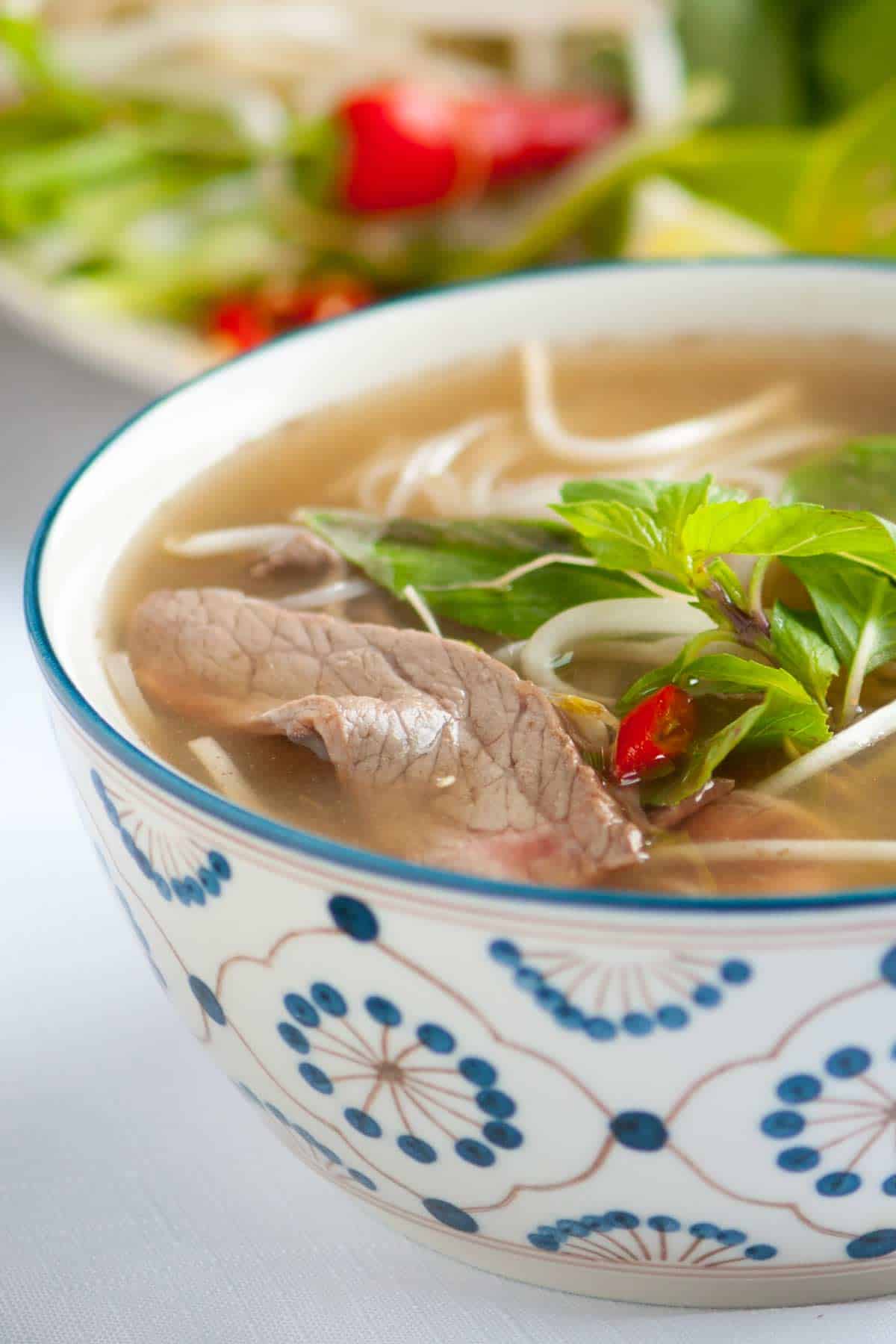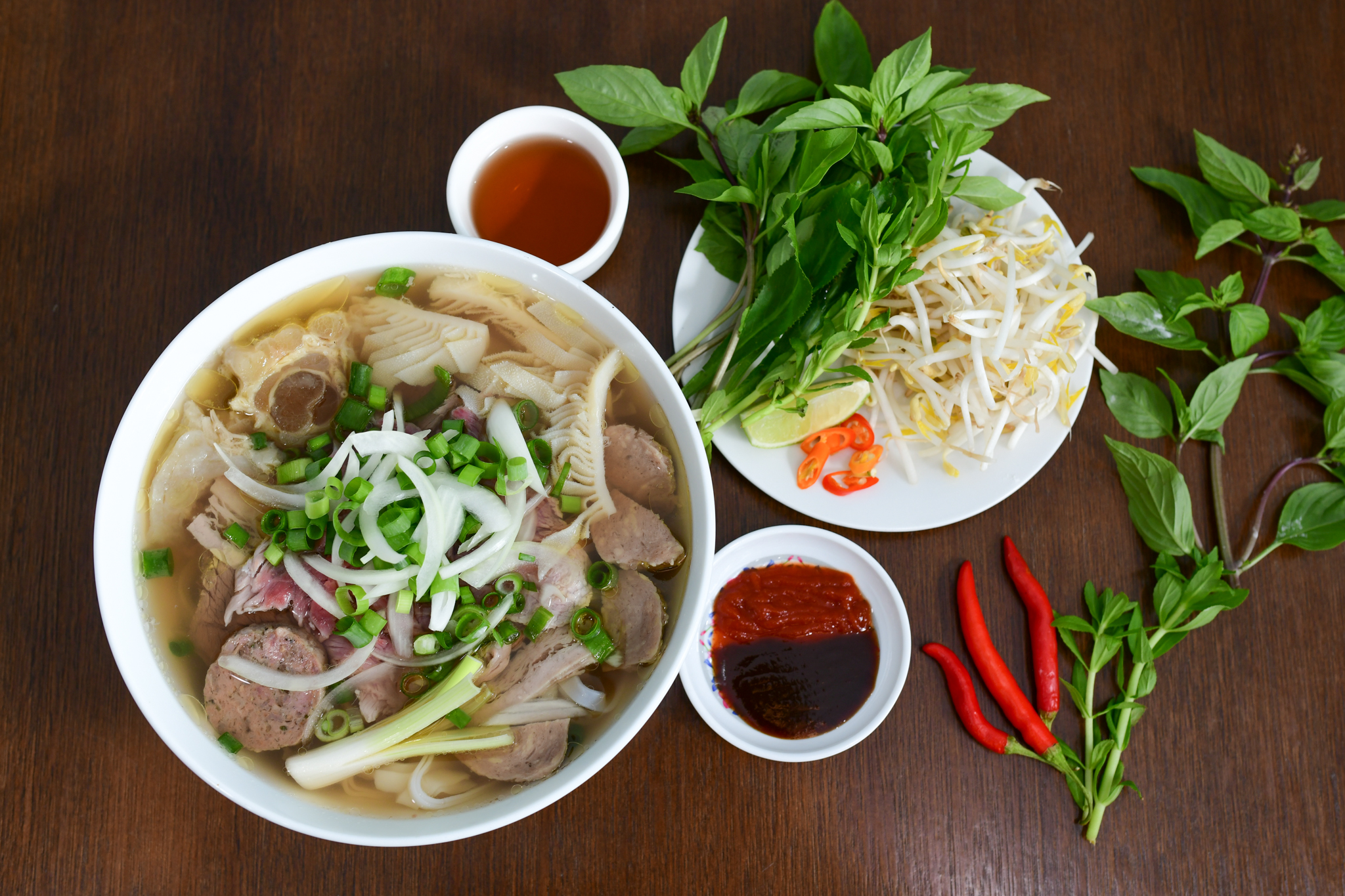Homemade Pho: Crafting the Perfect Vietnamese Noodle Soup
Related Articles
- Vegan Thai Curries: Balancing Spices And Coconut For Authentic Flavors
- Fermented Foods 101: Incorporating Kimchi And Kombucha Into Your Daily Meals
- The Secrets Behind Authentic Italian Risotto: A Step-by-Step Guide
- How To Make Plant-Based Sushi At Home: A Guide To Sustainable Seafood Alternatives
- Exploring The Rich Flavors Of Authentic Sichuan Hot Pot: A Must-Try Experience
Introduction
In this article, we dive into Homemade Pho: Crafting the Perfect Vietnamese Noodle Soup, giving you a full overview of what’s to come
Homemade Pho: Crafting the Perfect Vietnamese Noodle Soup

Pho, the iconic Vietnamese noodle soup, is a symphony of flavors and textures that transcends mere sustenance. It’s a comforting bowl of warmth, a vibrant explosion of aromas, and a culinary journey through the streets of Hanoi. While pho might seem intimidating to recreate at home, it’s actually a surprisingly achievable dish, even for novice cooks. This article will guide you through the process of crafting your own perfect pho, demystifying the intricacies and empowering you to bring the magic of this beloved soup into your own kitchen.
The Foundation: Broth is King
The heart and soul of pho lies in its broth, a complex and flavorful elixir that takes time and dedication to perfect. While shortcuts exist, the traditional method involves a long simmering process, allowing the ingredients to meld and release their essence. The foundation of pho broth is a combination of bones, typically beef or chicken, simmered with aromatic spices and vegetables.
1. Bone Selection:
- Beef bones: Choose marrow bones, knuckle bones, or shank bones for the richest, most flavorful broth. Look for bones with a good amount of meat still attached, as this will contribute to the depth of the broth.
- Chicken bones: Opt for whole chickens or chicken carcasses, including the neck and feet. These provide a lighter, more delicate broth.
2. Aromatic Spices:
- Star anise: This licorice-flavored spice adds a warm and slightly sweet note to the broth.
- Cinnamon sticks: These contribute a subtle warmth and a hint of sweetness.
- Cloves: These provide a pungent, slightly bitter note, balancing the sweetness of the other spices.
- Cardamom pods: These add a slightly floral and citrusy flavor to the broth.
- Black peppercorns: These add a peppery kick and complexity to the broth.
- Ginger: This pungent root adds warmth and a slightly spicy kick.
- Onion: This adds sweetness and a savory base to the broth.
- Garlic: This pungent bulb adds depth and complexity to the broth.

3. The Simmering Process:
- Roasting: Start by roasting the bones in a preheated oven until they are slightly browned. This process caramelizes the natural sugars in the bones, adding depth and richness to the broth.
- Boiling: Transfer the roasted bones to a large stockpot, cover with cold water, and bring to a boil. Skim off any foam that rises to the surface.
- Simmering: Reduce the heat to a low simmer and add the aromatic spices, onion, and garlic. Simmer for 4-8 hours, or even longer for a truly robust broth.
- Straining: Strain the broth through a fine-mesh sieve lined with cheesecloth to remove any solids.

The Essential Elements: Noodles and Meat
Pho is incomplete without its key components: the noodles and the meat.
1. Noodles:
- Rice noodles: Pho uses thin, flat rice noodles, known as "banh pho," which are readily available in Asian markets.
- Cooking: Soak the noodles in warm water for about 5-10 minutes until they are soft but still slightly chewy. Do not overcook them.
2. Meat:
- Beef: Thinly sliced beef brisket, flank steak, or ribeye are popular choices.
- Chicken: Tender chicken breasts or thighs are commonly used.
- Seafood: For a lighter option, try shrimp, fish, or squid.
3. Meat Preparation:
- Beef: Marinate the beef in a mixture of fish sauce, soy sauce, sugar, and garlic for at least 30 minutes.
- Chicken: Marinate the chicken in a similar mixture, or simply season with salt and pepper.
- Seafood: Marinate the seafood in a mixture of lime juice, fish sauce, and garlic.
The Finishing Touches: A Symphony of Flavors
The beauty of pho lies in its ability to be customized to your liking. Here are some essential ingredients that elevate the dish to new heights:
1. Garnishes:
- Bean sprouts: These crunchy sprouts add a refreshing contrast to the warm broth.
- Basil: Fresh basil leaves add a sweet, slightly peppery aroma and flavor.
- Cilantro: This herb adds a fresh, slightly citrusy flavor to the broth.
- Lime wedges: Squeeze fresh lime juice over your pho for a burst of acidity.
- Thai basil: This fragrant herb adds a unique, slightly anise-like flavor to the broth.
- Mint: Fresh mint leaves add a cool, refreshing flavor to the broth.
- Chiles: Sliced fresh chiles, such as Thai bird chilies or jalapenos, add a spicy kick to the broth.
- Sriracha: A dollop of sriracha adds a fiery, tangy punch to the broth.
2. Sauces:
- Fish sauce: This fermented fish sauce adds a salty, umami flavor to the broth.
- Hoisin sauce: This thick, sweet and savory sauce adds a rich depth of flavor to the broth.
- Soy sauce: This salty sauce adds a savory flavor to the broth.
The Art of Assembling Your Pho
Now that you have all the components, it’s time to assemble your perfect bowl of pho.
1. Broth: Ladle hot broth into individual bowls.
2. Noodles: Add the cooked noodles to the bowls.
3. Meat: Add your chosen meat, either raw or cooked, to the bowls.
4. Garnishes: Arrange the garnishes of your choice on top of the meat and noodles.
5. Sauces: Add your preferred sauces to the bowls, to taste.
6. Enjoy!
Tips for Success:
- Use high-quality ingredients: The quality of the ingredients will directly impact the flavor of your pho.
- Don’t overcook the noodles: Overcooked noodles will become mushy.
- Adjust the seasonings to your taste: Pho is a highly customizable dish, so feel free to experiment with different spices and sauces.
- Serve hot: Pho is best served hot, so make sure to heat the broth thoroughly before serving.
Variations on the Classic Theme:
Pho is a versatile dish that can be adapted to suit different tastes and preferences. Here are a few variations on the classic theme:
- Vegetarian pho: Use vegetable broth as the base and add tofu, mushrooms, and other vegetables.
- Spicy pho: Add chili peppers or sriracha to the broth for a fiery kick.
- Seafood pho: Use fish, shrimp, or squid as the protein.
- Pho with a twist: Experiment with different herbs and spices, such as lemongrass, ginger, or galangal.
A Culinary Journey Through Hanoi
Pho is more than just a meal; it’s a cultural experience. It’s a taste of Hanoi, a city where pho stalls line the streets, offering a comforting bowl of warmth to locals and visitors alike.
By crafting your own pho at home, you can bring a piece of Vietnamese culture into your own kitchen. Each bowl you prepare is a testament to the dedication and artistry that goes into this beloved dish. It’s a journey through the streets of Hanoi, a symphony of flavors, and a testament to the power of food to connect us to our heritage and to each other.
Beyond the Bowl: The Story of Pho
The history of pho is a fascinating tapestry woven with threads of tradition, innovation, and cultural exchange. Its origins are shrouded in the mists of time, with various theories about its birth and evolution.
1. French Influences:
One theory suggests that pho emerged during the French colonial period in Vietnam. The French introduced the concept of beef broth, which inspired the Vietnamese to adapt it to their own culinary traditions. The French also brought with them the practice of using vermicelli noodles, which later evolved into the flat rice noodles that are synonymous with pho today.
2. Vietnamese Innovation:
While French influences may have played a role, pho is ultimately a testament to Vietnamese ingenuity and adaptability. The Vietnamese embraced the concept of beef broth and combined it with their own local ingredients, creating a truly unique and delicious dish. The use of aromatic spices, like star anise, cinnamon, and cloves, is a testament to the Vietnamese culinary heritage.
3. The Evolution of Pho:
Over time, pho has evolved and diversified, with different regions developing their own unique variations. From the rich, flavorful pho of Hanoi to the lighter, more delicate pho of Saigon, each region has its own distinct interpretation of this beloved dish.
4. Pho: A Culinary Icon:
Today, pho is a culinary icon, not just in Vietnam but around the world. It is a testament to the power of food to transcend borders and unite cultures. It is a dish that evokes a sense of comfort, nostalgia, and cultural pride.
Conclusion: A Culinary Legacy
Crafting your own pho at home is more than just a culinary endeavor; it’s a journey through Vietnamese culture and history. It’s a chance to connect with the past, to celebrate the present, and to create a legacy of flavor for future generations.
So, gather your ingredients, embrace the process, and embark on your own culinary journey with homemade pho. Each bowl you create will be a testament to the magic of this beloved Vietnamese noodle soup, a dish that continues to captivate hearts and palates around the world.
Closure
Thank you for reading! Stay with us for more insights on Homemade Pho: Crafting the Perfect Vietnamese Noodle Soup.
Make sure to follow us for more exciting news and reviews.
We’d love to hear your thoughts about Homemade Pho: Crafting the Perfect Vietnamese Noodle Soup—leave your comments below!
Keep visiting our website for the latest trends and reviews.






